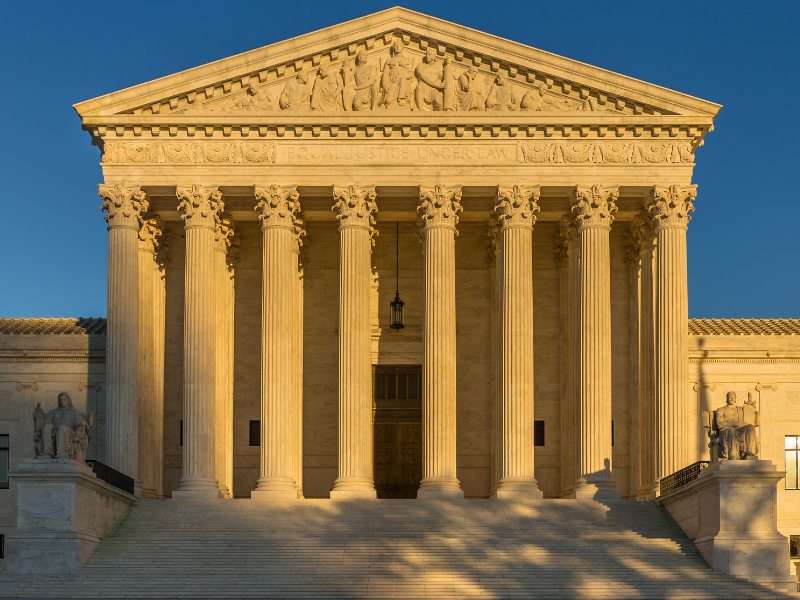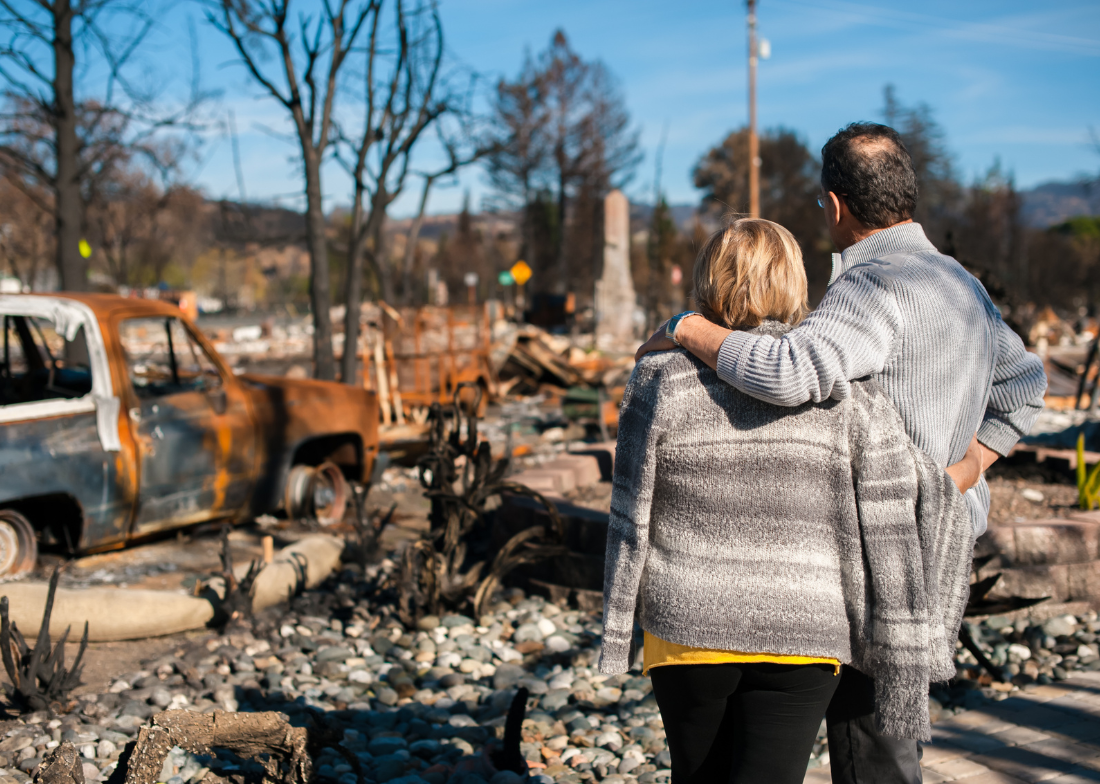How SCOTUS Impacts Climate Change 101
Victoria Whalen, ACE Fellow
|November 23, 2022

What is SCOTUS?
SCOTUS, also known as the Supreme Court of the United States, is the highest form of the tribunal in the U.S. and is often regarded as the “final arbiter of the law.” This means they have the ultimate authority on whatever disputes reach them. Their work focuses on protecting equal justice under the law as interpreters of the U.S. Constitution. The power of the Supreme Court is established under Article III Section 1 of the Constitution.
Each Supreme Court Justice is nominated by the current President of the United States whenever there is a vacancy (due to either retirement, death, or impeachment). Then, as part of the U.S. checks and balances system, the Senate has various interviews and hearings with the nominee, with a final simple majority vote deciding whether to confirm or deny the nominee. Currently, the Supreme Court consists of nine Justices—one Chief, and eight associate Justices. As of 2022, The Supreme Court Justice’s of the United States are:
- John G. Roberts Jr. – Chief Justice of the United States
- Clarence Thomas – Associate Justice
- Samuel A. Alito Jr. – Associate Justice
- Sonia Sotomayor – Associate Justice
- Elena Kagan – Associate Justice
- Neil M. Gorsuch – Associate Justice
- Brett M. Kavanaugh – Associate Justice
- Amy Comey Barrett – Associate Justice
- Ketanji Brown Jackson – Associate Justice
According to the Constitution, there are no specific qualifications for Supreme Court Justice, including age, profession, or citizenship requirements, compared to other political positions in the government. Interestingly, Justices do not have to have a law degree or even be a lawyer, although all current U.S. Justices are trained in law.
Supreme Court Justices have a unique position as they have indefinite term limits. The Constitution states, “[Justice’s] shall hold their Offices during good behavior,” meaning that the only way for them to be removed is through impeachment, retirement, or death. For example, at the beginning of 2022, Associate Justice Stephen Breyer retired from the bench after serving 27 years, while Associate Justice Clarence Thomas still remains on the bench after serving 30 years.
How Does the Supreme Court Work?
For SCOTUS to handle a case, the Court must receive a petition granting a writ of certiorari. In other words, this is a request for the Supreme Court to review the case record and verdict under a lower court. The Justices have complete discretion on which cases they hear, which typically would have a question surrounding national significance or looking at a new precedent. The Court receives approximately 8,000 petitions for a writ of certiorari but normally hears 80 cases within the yearly session.
Once the Court takes a case, they begin a process called oral arguments, where each party will receive roughly 30 minutes to persuade the Justices. No case is presented before a jury or a witness, and the Justices must consider all the records, including evidence, arguments, previous rulings, and more. After oral arguments, an intervening recess period follows, in which those on the bench will take time to study the cases and work on the opinions from the case.
The opinion is a piece of writing that outlines how the Justices interpreted the law and their final ruling. For an opinion to be finalized, a majority of the Justices must agree to all the contents of the opinion. Justices do this by “signing onto” the opinion, typically read as “majority opinion.” Justices also can write a concurring opinion (agreeing with the majority, but not with the reasoning) or a dissenting opinion (disagreeing with both the ruling and reasoning). No opinion is considered the official opinion of the Court until it is delivered in an open Court (or at least made available to the public).
The Supreme Court and Climate Change
Environmental law and climate change issues make up a small fraction of the cases the Supreme Court hears. This is due to various reasons, like how novel environmental law cases are since their conception in the 1970s, a lack of environmentalist/activist views on the bench, and the overall difficulty of finding standing (the capacity to bring a legal suit to court). For example, Zachary Green did a study in 2015 that focused on cases involving the National Environmental Protection Act and unveiled that out of the 17 cases SCOTUS has heard, none have sided with the environmental organizations bringing forth the suits.
National Environmental Policy Act
NEPA, the National Environmental Policy Act, was first signed into law on January 1, 1970, and is regarded as the “Magna Carta” of federal environmental laws. Broadly, NEPA requires Federal agencies to assess the environmental effects of proposed major Federal actions before making decisions. This includes (but is not limited to):
- Making decisions on permit applications
- Adopting federal land management plans
- Constructing publicly-owned facilities
In addition, NEPA also established the Council on Environmental Quality (CEQ) as a new division within the president’s executive office. The Council plays a critical role in reviewing mandatory Environmental Impact Statements and has the power to adopt regulations.
West Virginia v. EPA
As climate change consequences continue to grow, agencies worldwide are working on regulation and mitigation efforts. That task typically falls on the Environmental Protection Agency (EPA) in the United States. Throughout the years, the EPA has been involved in several cases involving conservation or mitigation efforts. This continues to be the case in 2022.
In June 2022, by a 6-3 decision, the United States Supreme Court ruled that the Clean Power Plan established under the Barack Obama administration went beyond the EPA’s power to regulate. Specifically, the EPA had exceeded congressional authority by pushing utilities to move system-wide from coal power generation to cleaner electricity production, such as wind and solar energy. The Court further explained that such a decision could transform the economy and thus should fall solely on Congress. The EPA can still regulate carbon emissions; however, it’s very narrow and depends on the specific utility power plant.
Many environmental activists and organizations have spoken out against the ruling believing that the Supreme Court took away the EPA’s power to clean the air we breathe. Research fellow and Professor of Environmental Epidemiology Charlotte Roscoe said, “This is a regressive decision that will limit the EPA’s power to control emissions and mitigate climate change, which is a huge setback for public health.”
Environmentalists and legal scholars alike are also worried about the broader effects that this ruling might have. Many have pointed out that the Supreme Court’s decision does not align with previous legal precedent, which always deferred to a specific agency’s expertise. Moreover, the ruling puts into question federal agencies’ power to interpret existing laws based on the best available science and set robust standards accordingly.
Want to read more from ACE? Check out our Blog.
Join our Youth Action Network
More Blog Posts
Driving India towards self sufficiency and freedom from oil
India can shield itself from oil-price shocks and global pressure over Russian barrels by leaning harder into two strengths it …
Read More
Unnatural, Not Unprecedented
For two weeks, residents of Southern California endured a waking nightmare. Parents raced against time – hurrying down the driveway …
Read MoreCrafting a Vision for the Future: My Experience at LCOY USA 2024
Dry and sunny Tempe, Arizona where temperatures have been over 100 F for 113 consecutive days, delegates gathered to attend …
Read More